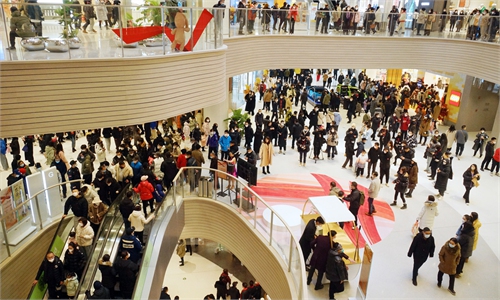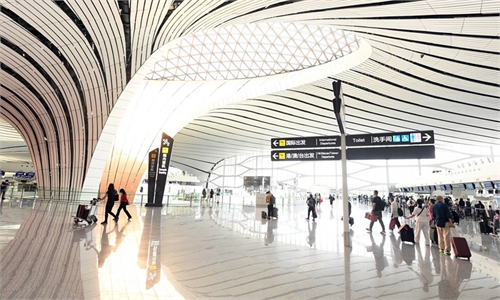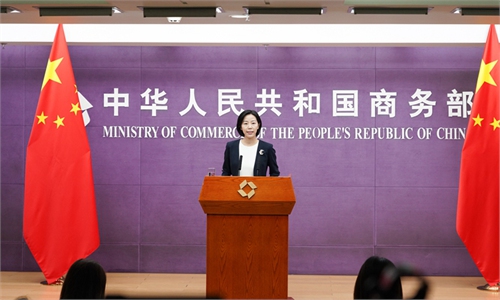China updates COVID diagnosis, treatment protocol as country downgrades epidemic management level
Antigen detection added as diagnosis criterion, nucleic acid testing no longer necessary for leaving hospitals
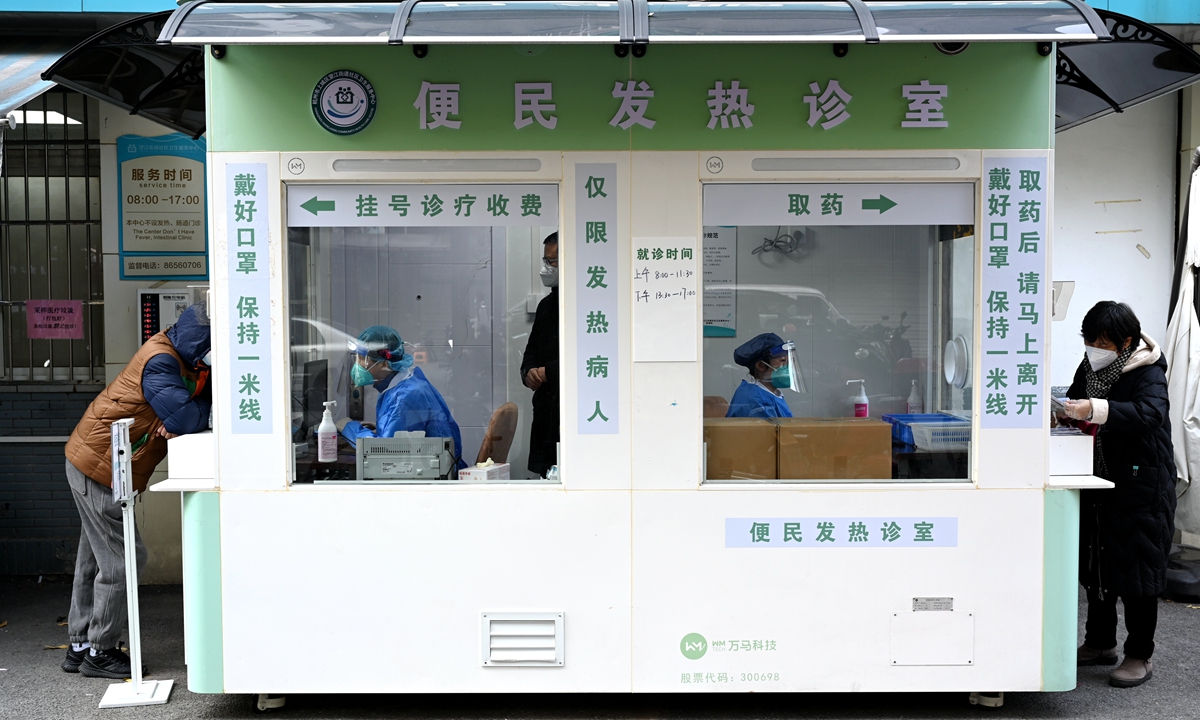
Residents visit a fever clinic transformed from a sampling kiosk of nucleic acid testing in Hangzhou, East China's Zhejiang Province on December 22, 2022. Photo: IC
China on Friday released the 10th edition of its diagnosis and treatment protocol for novel coronavirus infection, two days before the country downgrades the management of COVID-19 from Class A to Class B as a move to further refine COVID management measures toward reopening based on science and epidemic situation. The adjustments in the latest document include adding antigen results as diagnostic criteria and ending the requirement for centralized quarantine.
Released by the National Health Commission (NHC) and the National Administration of Traditional Chinese Medicine, the latest protocol came nearly 10 months after the release of its previous version in March 2022, while the name for COVID-19 in Chinese has been adjusted from novel coronavirus pneumonia to novel coronavirus infection.
This is because the virus' pathogenicity has decreased and only a few cases showed symptoms of pneumonia, the NHC said in an introduction on the 10th protocol released on its website on the same day.
The pathogenicity of the virus in the early stage of the epidemic was strong, and most clinical manifestations indicated pneumonia. However, the virus continued to mutate and the Omicron strain has become the main circulating strain, with a weakened virulence, and most infected people have symptoms including cough, fever and sore throat. This means the name "novel coronavirus infection" can more accurately reflect the characteristics of the disease, Lu Hongzhou, head of the Third People's Hospital of Shenzhen, told the Global Times on Friday.
Antigen detection has been added as a criterion for diagnosis of novel coronavirus infection in the latest protocol.
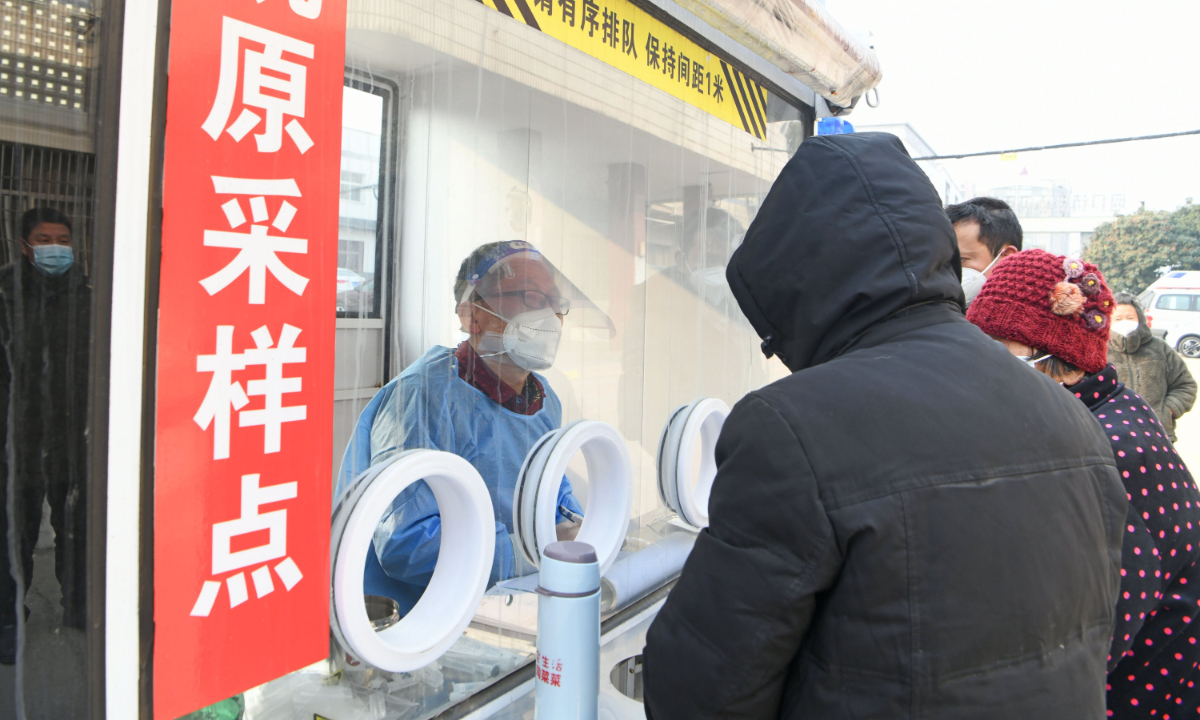
Photo:VCG
With the continuous advances of antigen detection technology and the continuous improvement in detection accuracy, people infected with the new coronavirus, especially those with strong infectiousness, can be diagnosed promptly through antigen detection. It is also relatively easy to perform rapid self-testing for most infected people who are treated at home, the NHC said.
The new protocol also stopped requiring identification of suspicious COVID-19 cases, as diagnosis of the disease can be made quickly and accurately via nucleic acid testing and antigen testing. This adjustment will help improve the efficacy of clinical diagnosis and realize quick admission, the NHC explained.
The new version also further optimizes the clinical classification of COVID-19 cases from light, medium, severe to critical conditions, which, according to Lu, is more in line with clinical practice.
The protocol identifies some groups who have high risk of becoming critical cases, including those aged 65 and above who have not been fully vaccinated. Vital signs monitoring, especially finger oxygen saturation during rest or after-activity monitoring indicators, will be included in the early warning indicators of severe conditions, according to the new protocol, which further improves the diagnostic criteria and warning indicators for severe and critical cases, Lu highlighted.
Other adjustments in the latest protocol compared with the ninth version include ending the requirement of centralized quarantine and treatment of confirmed COVID-19 cases, and ending requiring negative nucleic acid testing results as one of the standards for patients to leave hospitals.
The ninth protocol required two negative nucleic acid testing results that are conducted within at least 24 hours and show Ct value of no higher than 35 before a COVID-19 patient is allowed to be discharged.
Now, a patient can be discharged as long as their condition is significantly improved, vital signs are stable, body temperature is normal for more than 24 hours, lung imaging shows that the acute exudative lesions have improved significantly and oral drug treatment can be utilized, and there are no complications that require further treatment, according to the 10th protocol.
These adjustments are in line with China's decision in late December 2022 to downgrade the management of COVID-19 from Class A to Class B starting January 8. This means there will be no more quarantine for people entering the country, and there will be no sealed control of COVID-19 cases or designation of high-risk areas.
China has been optimizing its COVID-19 management measures since late November 2022 based on science and the characteristics of dominant variants as well as the progression of the epidemic. Chinese authorities have reiterated that the focus of the country's anti-epidemic strategy have shifted from preventing infection to treatment. These adjustments will help to free up a large amount of medical resources from makeshift hospitals, which can be redeployed to normal medical treatment in addition to protecting vulnerable groups, and will serve to provide a legal basis for further optimization of prevention and control measures in the future.
At a press conference on Friday, Chinese Foreign Ministry spokesperson Mao Ning revealed that Chinese experts on Thursday attended an online briefing for World Health Organization (WHO) members to provide a further update on the COVID-19 epidemic. The WHO said that China has stepped up efforts to share information on the epidemic over the past few weeks, according to Mao.
According to the WHO, China has been uploading genetic sequencing data of the virus and sharing more information about the epidemic over the past few weeks. China is ready to strengthen cooperation with the international community, including the WHO, to better tackle challenges brought by the epidemic and protect people's lives and health, said Mao.
